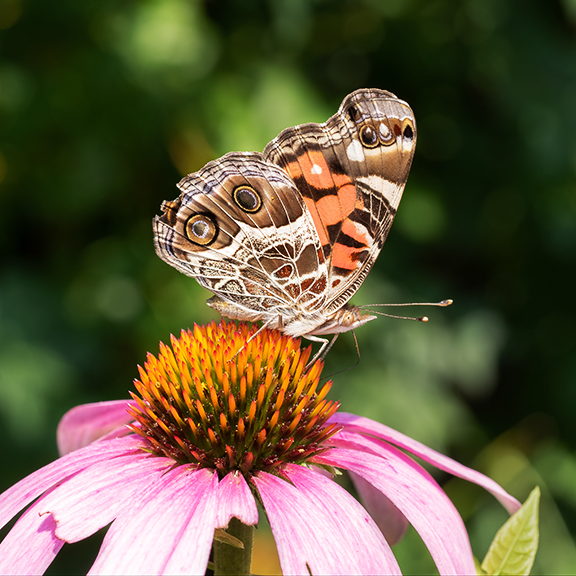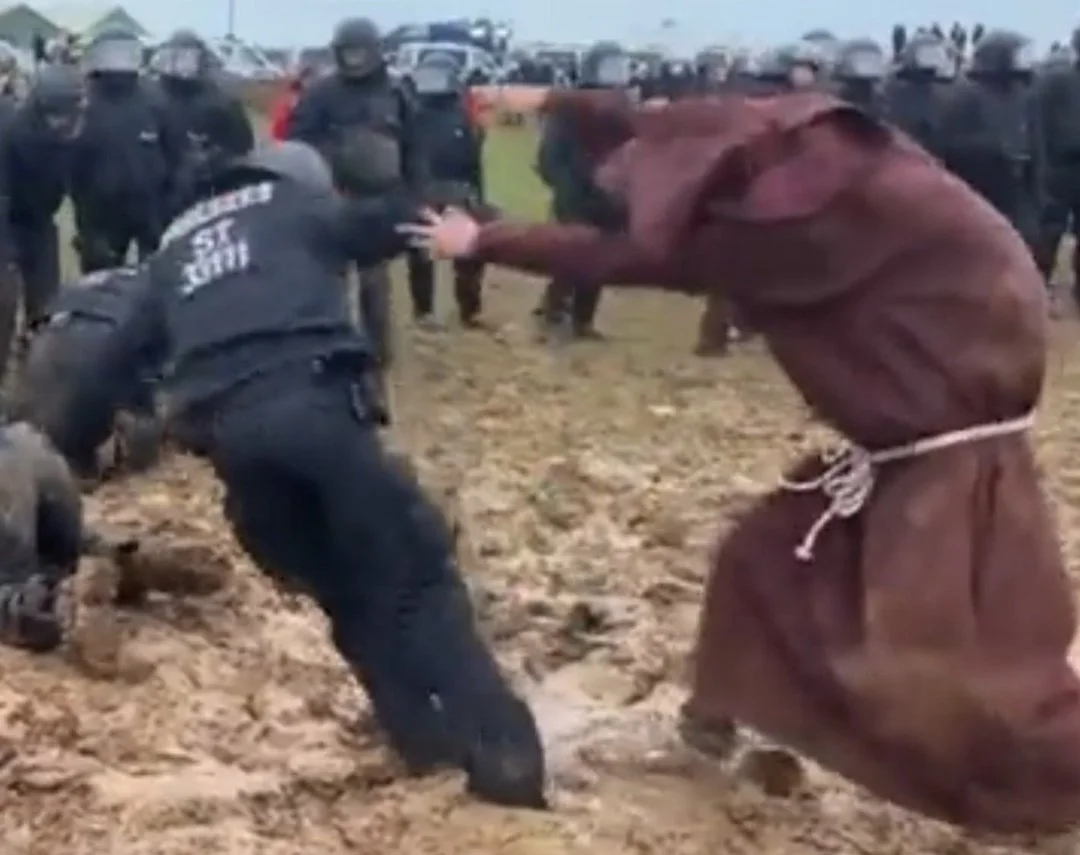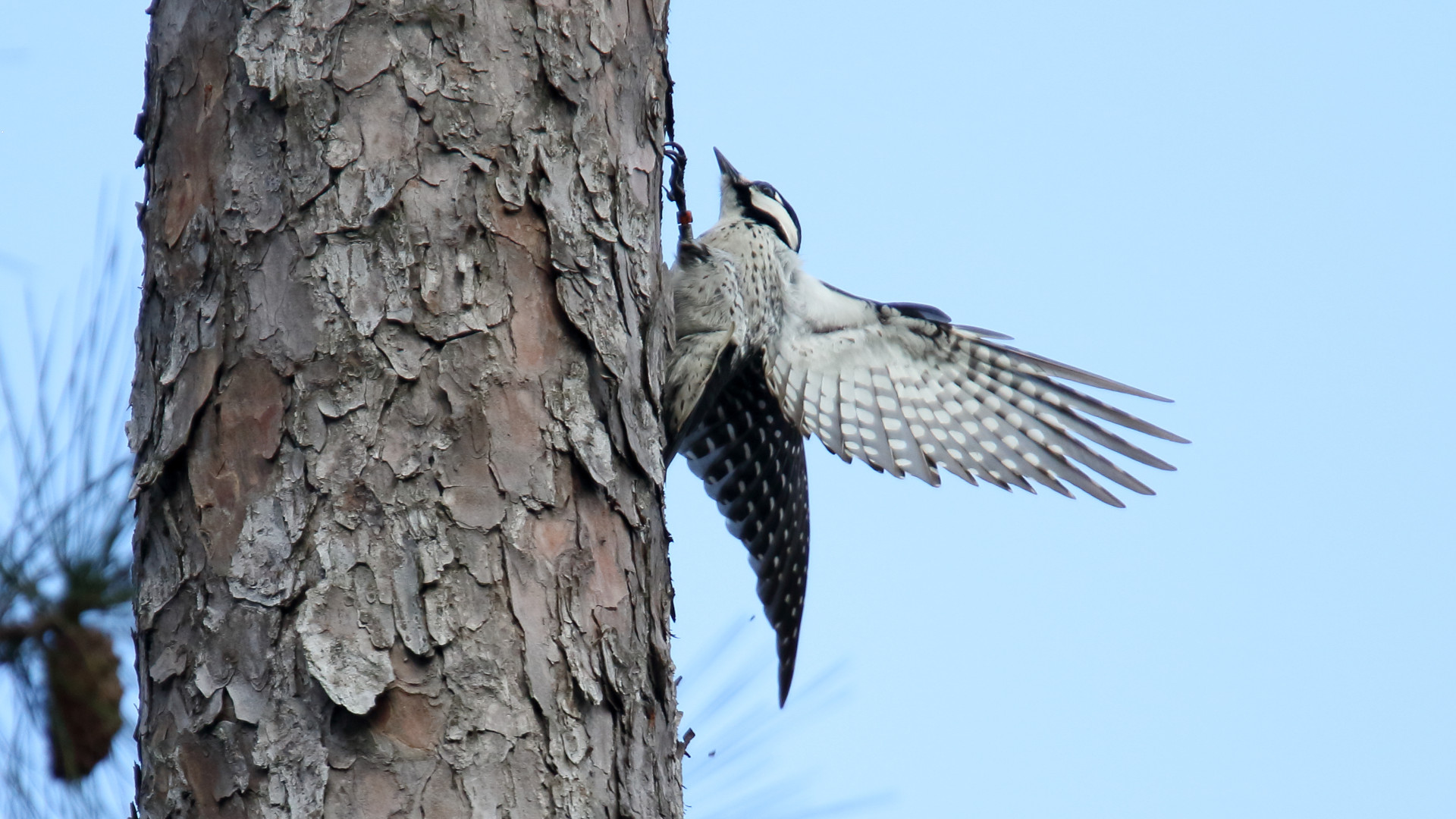It’s more beautiful than delicious, honestly. The fruit doesn’t have a very strong flavour, and the spines and seeds make it difficult to eat many of them out of hand, BUT blended with other things, it can be quite nice.
Jim East
- 58 Posts
- 43 Comments

 1·1 day ago
1·1 day agoIs “spikes” a euphemism for durian?

 2·2 days ago
2·2 days agoDo you have plum blight in your area? Something to be aware of if planting native Prunus species. If you don’t have problems with fungus there, then I definitely recommend Prunus americana.
I also second the suggestion of Diospyros virginiana. I’ve heard praise of the ‘Meader’ cultivar in particular.
Are you familiar with Amelanchier laevis? It should be native to Ohio.

 1·2 days ago
1·2 days agoFor those finding this post for the first time, OP is now an admin of https://lemmy.vg/ which is a Lemmy instance run by vegans for vegans.
“You could take the first step by
walking and cycling instead of driving a cargoing vegan.”Fixed it.

 2·2 days ago
2·2 days agoDid you see this farther down on the same page?
The 1000 Liters of water in the Bathtub corresponds to the 1000 Gigatons of CO2 we have added to the atmosphere since 1750. The inflow of 50 L/m into the bathtub corresponds to the 51 Gigatons of greenhouse gases we are emitting each year. When the Killing machine faucet is shut off, it reduces the net inflow into the bathtub to 5 L/m, a 90% reduction in the inflow, which corresponds to the 87% reduction we expect in real life. The 2000 Liters of Vegan Reforestation potential corresponds to the 2000 Gigatons of CO2 that can be stored through rewilding grazing lands. The 350 Liters in the Aerosols cistern corresponds to the one-third increase in radiative forcing that will occur when aerosols disappear as well as the outgassing of CO2 that will occur from the ocean/land as we reduce CO2 levels in the atmosphere.
To put it another way:
The bathtub basically represents the world climate system. The water in the bathtub represents the greenhouse gases (mainly carbon dioxide, methane, and nitrous oxide) that humans have put into the atmosphere, responsible for the warming of the planet.
The baby represents life on Earth, the majority of which will be killed in a mass extinction if climate change continues too far. This is represented by the baby drowning in the bathtub full of water.
The burning machine represents the burning of fossil fuels (petroleum, coal, natural gas, and all of the related substances like tar sands and oil shale). The faucet on the left side represents the greenhouse gas emissions from the burning of fossil fuels, contributing to climate change.
The “Aerosols” cistern represents the amount of warming that has not occurred due to the cooling effect of air pollution reflecting sunlight back into space. If the air pollution (largely caused by burning fossil fuels) were to dissipate, such as by shifting to cleaner-burning fuels (low-sulphur diesel fuel, for example) or by no longer burning fuel for energy at all (shutting down the “burning machine” in this analogy), then all of the warming cancelled out by the pollution will occur. This is represented by the water in the cistern flowing out into the bathtub; removing the aerosol pollution has the same effect as adding more greenhouse gases to the atmosphere.
The killing machine represents the animal exploitation industries, including but not limited to animal agriculture. The smaller faucet on the right side represents the greenhouse gas emissions of these industries due to deforestation, animal respiration and flatulence, fermentation of waste, and so on.
The drain of the bathtub represents the rate at which forests and other natural vegetation could capture greenhouse gases (mainly carbon dioxide), removing them from the atmosphere and removing their effect on the climate. This only applies if the forests are allowed to grow back, which is currently not the case due to the huge amount of land used by animal agriculture for grazing and the production of feed crops (maize, soya, palm oil, and so on). This is representing by the animal parts and secretions blocking the drain.
The 2000L Vegan Reforestation Potential tank represents the total amount of carbon dioxide that could be captured and removed from the atmosphere, negating its effect on the climate, if the land currently used for grazing cows/goats/sheep/others were allowed to regrow into forest. It is called the “vegan” reforestation potential because in order for that land to be freed from grazing so that the forests to grow back, people need to live vegan.
The climate bathtub model is meant to illustrate that ending the use of fossil fuels without ending animal exploitation would not only not solve the climate crisis, it would immediately make the problem worse due to the reduction in aerosol pollution. It is crucial to first “unblock the drain” by putting an end to the industrial-scale killing of other animals in order to stop the climate bathtub from overflowing and drowning the baby (killing most life on Earth). The order of operations matters. Like algebra class.
Does that help?

 7·3 days ago
7·3 days agoThat was fast! The leaves are slightly different than the photo there on Wikipedia, but perhaps Palicourea elata? The genus seems right. Thanks!

 1·4 days ago
1·4 days agoIt most certainly is NOT Chrysophyllum cainito, but thanks for trying. Those are some beautiful photos.

 1·6 days ago
1·6 days agoThank you for taking the time!
!fruit@slrpnk.net welcomes you!
 1·6 days ago
1·6 days agogeneral background info: https://en.wikipedia.org/wiki/Carbonate–silicate_cycle
Thank you for sharing such beautiful words of wisdom in these troubled times.

 1·8 days ago
1·8 days agoEven if you cover the whole planet in forests, there is a finite amount of fossil fuels you can burn before it is negated.
I think that this is the crux of the matter, and of course you’re right. The total amount of carbon stored in fossil fuels is (presumably, without searching for the numbers) much greater than the amount currently stored in living organisms, so there is a finite amount of fossil fuels that can be burnt before the carbon emissions exceed the capacity of forests/vegetation to capture it. Do you know what that “finite amount of fossil fuels” would be? From what I have seen, it is quite large, though humanity is rapidly approaching it. What’s needed is for the rate of emissions to be reduced below the rate of capture, and so a reduction in fossil fuel use is urgently needed, but I wouldn’t say that completely eliminating fossil fuel use is more important than protecting forests. All that’s needed in the long term is for carbon capture to at least equal carbon emissions. In the short term, the planet is already close enough to the “point of no return” that reforestation is necessary in order to bring down levels of carbon dioxide, regardless of how quickly fossil use ceases. It has to be both. Burning fossil fuels is not a sustainable way to meet the energy needs of 8 billion+ humans. Cutting down forests for biofuel is not a sustainable way to meet the energy needs of 8 billion+ humans. Deforestation for biofuel would be sustainable for a much larger population than would burning fossil fuels (due to the extremely slow renewal rate of fossil fuels), but we’re past that point. There’s not enough land. Either energy consumption needs to drastically decrease, or non-combustion sources of energy are needed.
I get the impression that we are essentially “on the same side” and just quibbling over details. You make an excellent case against fossil fuels! Looking at it in terms of the broader carbon cycle makes the necessity of ending fossil fuel use very obvious even ignoring any concerns about pollution, destructive extraction practices, or other harmful effects.

 1·8 days ago
1·8 days agoI understand what you’re getting at, but I don’t see it as being so simple.
Fossil fuels are essentially just ancient soil carbon, so in a way, we’re talking about the same thing on different time-scales. My point was/is that the combination of deforestation and burning of the cut biomass actually reduces the amount of carbon that can be stored in the soil on a given area of land, not just releasing it once and then recycling it. To capture the same amount of carbon again would require a greater area under management than the area originally cut. On a finite planet, there is a limit to how much this deforestation for biomass production could be scaled up without net-positive emissions. (I’m tired, so this may not be the most articulate.)
The world’s forests capture a substantial amount of the carbon dioxide emitted by humans, and extensive reforestation could capture even more. By reducing the carbon capture potential of forests, that’s less carbon dioxide absorbed year after year. Over a very long period of time, “releasing it one time” is what burning fossil fuels does: it releases stored carbon once, and then trees and other plants recycle it. Deforestation reduces the recycling.
Even though mature forests can store more total carbon, it seems that young forests, with more small trees, may actually be able to absorb more methane, so there can definitely be some advantage to managing trees for wood production on a short cycle. Methane is a much more potent greenhouse gas than carbon dioxide, so this is one way in which the overall situation is complicated.
Of course, avoiding both deforestation and fossil fuels is even better.
I’m glad that we agree on this point. It doesn’t need to be one or the other. The most effective approach to addressing climate change would involve reforestation and eliminating dependence on fossil fuels by developing clean energy technologies.
Ultimately, carbon capture just needs to match carbon emissions (plus a bit extra at first to compensate for current overshoot), and realistically, it will take both reforestation and a reduction in emissions to achieve that. Ending animal agriculture makes the most progress toward both.

 1·9 days ago
1·9 days agoOne more reason to grow your own food.

 1·9 days ago
1·9 days agoNot just strictly aquatic animals, either.
On the basis of monitored natural inland wetlands (including peatlands, marshes, swamps, lakes, rivers and pools, among others), 35% of wetland area was lost between 1970 and 2015, at a rate three times faster than that of forests.
Brazil’s Pantanal is at risk of collapse, scientists say (2022):
The Pantanal, which means “great swamp” in Portuguese, is the world’s largest tropical wetland, even bigger than the state of Florida.
This wetland savanna lies in the heart of South America and boasts one of the continent’s highest concentrations of plants and animals.
Pantanal’s intense blazes stoke fears of another destructive fire season (2024):
The clearing of vegetation for large-scale agriculture is also a growing problem in the wetlands. The Pantanal lost more than 49,600 hectares (122,600 acres) of native vegetation last year, according to MapBiomas, a 59% increase in deforestation from the previous year. “Because of the drought, people are clearing areas, deforesting, in the center of the Pantanal,” Rosa said.
Act now or lose the Pantanal forever (2024):
This year, over two million hectares of the world’s largest wetland, the Pantanal in Brazil, have burned, as agribusiness drains it and climate change dries it, reducing river flows and allowing fires to spread.
While the fires that ravage [the Pantanal] are often set by individual ranchers, they are worsened by a toxic mix of drought and extreme weather caused by the climate crisis, land clearing for cattle ranching and monoculture farming, mining, road construction, and hydropower. It is also largely unprotected – around 93% of the Pantanal is private land, and 80% of that is used for cattle ranching.
Indonesia is clearing vast peatlands to grow food. Climate costs are dire. (2024):
From 1995 to 1998, Indonesian dictator Suharto led a project to cultivate nearly 2.5 million acres. To drain wetlands in Kalimantan, more than 2,000 miles of canals were dug, many of them so wide that they’re still visible from airplanes decades later. A group of visiting European researchers said at the time that it would take centuries for the ecosystem to recover. “Peatland destruction,” they warned, “is an irreversible process.”
World’s biggest deforestation project gets underway in Papua for sugarcane (2024):
A total of 2 million hectares (5 million acres) of forests, wetlands and grasslands in Merauke district will be razed to make way for a cluster of giant sugarcane plantations, part of the Indonesian government’s efforts to boost domestic sugar production.
Indonesian forestry minister proposes 20m hectares of deforestation for crops (2025):
The clearing of 20 million hectares of forests could release up to 22 billion metric tons of carbon dioxide, equivalent to the annual emissions from nearly 5,300 coal-fired power plants.
The same patterns keep repeating. Until humans learn to consider other beings and their habitats, the problem will continue to get worse.
Veganic agricultural practices, including syntropic agriculture and agroforestry techniques, can produce food sustainably, free up land currently used for grazing and “livestock” feed, and spare vulnerable ecosystems like wetlands, all while mitigating climate change.
 2·9 days ago
2·9 days agoNot just strictly aquatic animals, either.
On the basis of monitored natural inland wetlands (including peatlands, marshes, swamps, lakes, rivers and pools, among others), 35% of wetland area was lost between 1970 and 2015, at a rate three times faster than that of forests.
Brazil’s Pantanal is at risk of collapse, scientists say (2022):
The Pantanal, which means “great swamp” in Portuguese, is the world’s largest tropical wetland, even bigger than the state of Florida.
This wetland savanna lies in the heart of South America and boasts one of the continent’s highest concentrations of plants and animals.
Pantanal’s intense blazes stoke fears of another destructive fire season (2024):
The clearing of vegetation for large-scale agriculture is also a growing problem in the wetlands. The Pantanal lost more than 49,600 hectares (122,600 acres) of native vegetation last year, according to MapBiomas, a 59% increase in deforestation from the previous year. “Because of the drought, people are clearing areas, deforesting, in the center of the Pantanal,” Rosa said.
Act now or lose the Pantanal forever (2024):
This year, over two million hectares of the world’s largest wetland, the Pantanal in Brazil, have burned, as agribusiness drains it and climate change dries it, reducing river flows and allowing fires to spread.
While the fires that ravage [the Pantanal] are often set by individual ranchers, they are worsened by a toxic mix of drought and extreme weather caused by the climate crisis, land clearing for cattle ranching and monoculture farming, mining, road construction, and hydropower. It is also largely unprotected – around 93% of the Pantanal is private land, and 80% of that is used for cattle ranching.
Indonesia is clearing vast peatlands to grow food. Climate costs are dire. (2024):
From 1995 to 1998, Indonesian dictator Suharto led a project to cultivate nearly 2.5 million acres. To drain wetlands in Kalimantan, more than 2,000 miles of canals were dug, many of them so wide that they’re still visible from airplanes decades later. A group of visiting European researchers said at the time that it would take centuries for the ecosystem to recover. “Peatland destruction,” they warned, “is an irreversible process.”
World’s biggest deforestation project gets underway in Papua for sugarcane (2024):
A total of 2 million hectares (5 million acres) of forests, wetlands and grasslands in Merauke district will be razed to make way for a cluster of giant sugarcane plantations, part of the Indonesian government’s efforts to boost domestic sugar production.
Indonesian forestry minister proposes 20m hectares of deforestation for crops (2025):
The clearing of 20 million hectares of forests could release up to 22 billion metric tons of carbon dioxide, equivalent to the annual emissions from nearly 5,300 coal-fired power plants.
The same patterns keep repeating. Until humans learn to consider other beings and their habitats, the problem will continue to get worse.
Veganic agricultural practices, including syntropic agriculture and agroforestry techniques, can produce food sustainably, free up land currently used for grazing and “livestock” feed, and spare vulnerable ecosystems like wetlands, all while mitigating climate change.




















Hello and thank you for your thoughtful comment. In general, I agree. I was not insinuating that Dipteryx oleifera trees (or plants in general) are only valuable as a source of food. They provide a myriad of ecosystem services, and all life in the forest is connected and interdependent. I simply meant that while some fruit-bearing plants are widely planted outside of their native range for food (durians, mangos, peaches, and probably most things that we both eat), this particular tree is probably not worth planting for its fruit alone (especially considering its size), and therefore it doesn’t make sense to grow it outside of its native range as one might do with some other fruit trees. Within its native range, it could be worth planting for the sake of restoring the forest, in which case eating the fruit would be a bonus.
Of course, no animal is food.